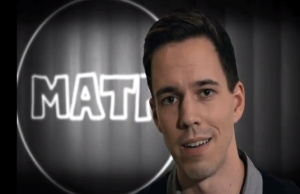I enjoy starting my mornings with a look at my Twitter feed. There’s always something there that is intellectually stimulating, thought provoking and entertaining. Some posts stand out more than others and some continue to resonate well after the initial reading of the post. Eric Saibel, assistant principal at Hall Middle School and author of the blog Principals in Training, shared the video A Tour of Copenhagen’s Noma with Chef Rene Redzepi this morning. The analogy of the chef’s observation of his professional field were stunningly similar to those of the education profession.
The story of Chef Rene’s kitchen begins as he describes the kitchen’s reliance on local resources, not unlike the classroom and the LCAP, as well as changes that have been implemented in his kitchen the past couple of years, not unlike changes occurring in our classrooms as the impact and possibilities available through the use of 21st Century tools are continuing to work their way into classroom pedagogy. There is a lesson in Chef Rene’s insight on the importance of the design of the working environment to support openness, light and creativity that can have a powerful impact on the learning environments we create for our students.
“We almost ruined our own trade by making it too tough, too hard… People are entering our trade for the wrong reasons and are surprised when they work 85 hours and then they feel tired one day and they’re out. We need to change this.”
It is important to employees in all industries that they feel valued and invested in, yet it is not uncommon to see teachers’ passion for education being taken advantage of as evidenced by the recent economic downturn in which many of our schools survived because of the furlough days and pay reductions taken by the professionals in our field. A July 2014 report from the Alliance for Excellence in Education showed an annual turnover rate of 20% for teachers in the education profession correlating to 1 in 5 teachers leaving the profession every year. While the reasons vary among those leaving the profession, the most often cited reason is “dissatisfaction with working conditions.” This high rate of turnover is costly bringing with it a national annual price tag $2.2 billion to replace the vacated positions.
“We work a lot in the trade. There’s no way around it. You’re going to work your ass off and so do we, but with a little less of the pressure…”
There continues to be a myth that has run through generations that educators are done by three, have weekends off and enjoy long summer vacations. Every teacher will tell you about the late meetings they stay for, the committees they serve on, the lessons they plan and the papers they grade at home during the evenings and on weekends as well as the work they do over the summer to prepare for the upcoming year and investing in their own professional development. Yes, educators work their asses off which makes Chef Rene’s next quote also fitting to the industry.
“It’s a business where you work so much for very little money that it needs to be very inspiring, it needs to be very cool. It needs to be family. It needs to be a tight team.”
What would happen if we truly invested in the on-going professional development of educators allowing teachers to take the lead in the decision making of the direction of their professional growth? What if we designed classrooms and teachers lounges to support 21st century tools? Would they become, as Chef Rene describes of his staff, more confident? Would they make more decisions, be less afraid to try new things, to be creative and innovative? What can we do to make our industry/our passion cool? How do we create tight teams that feel like a close and supportive family so that members don’t want to leave?
“It’s the cook that cooks the food that creates the magic it’s not the recipe.”
translated…
It’s the teacher that the teaches the lesson that creates the magic, it’s not the script.
There are quotes throughout the interview that are open to analogies with the education profession. I hope you enjoy watching the video, consider sharing your favorite quote and it’s analogy to our profession and your ideas for making life in education “cool” so that we grow together as we educate each group of students that come through our classrooms.



